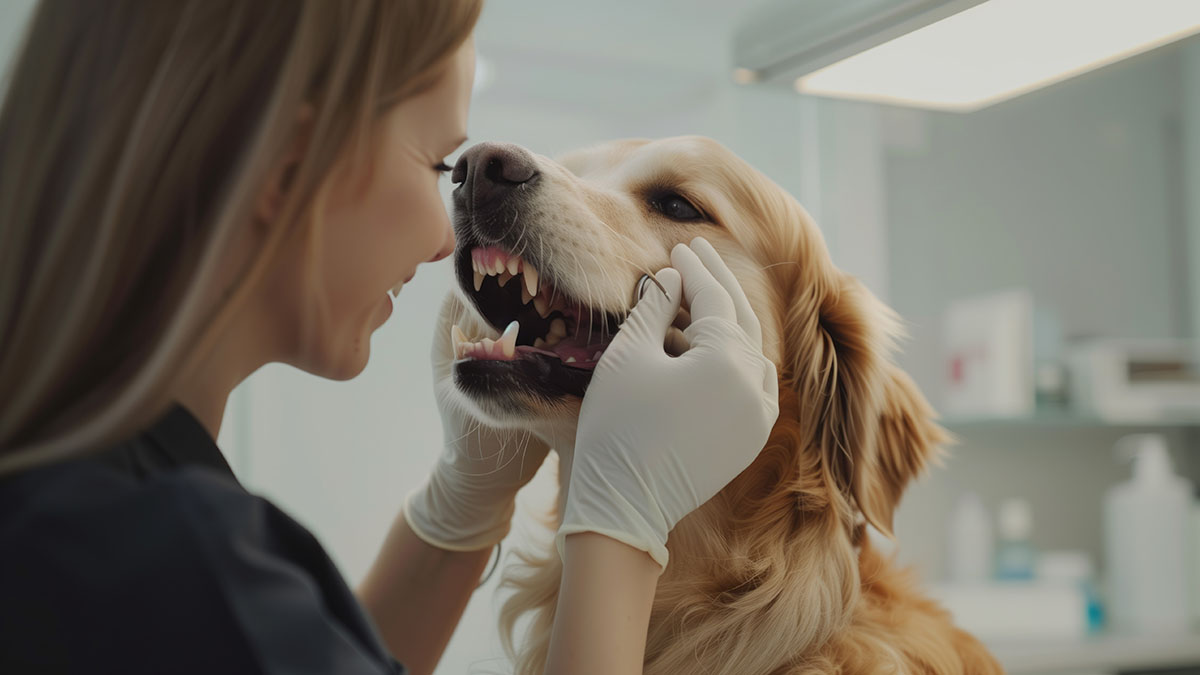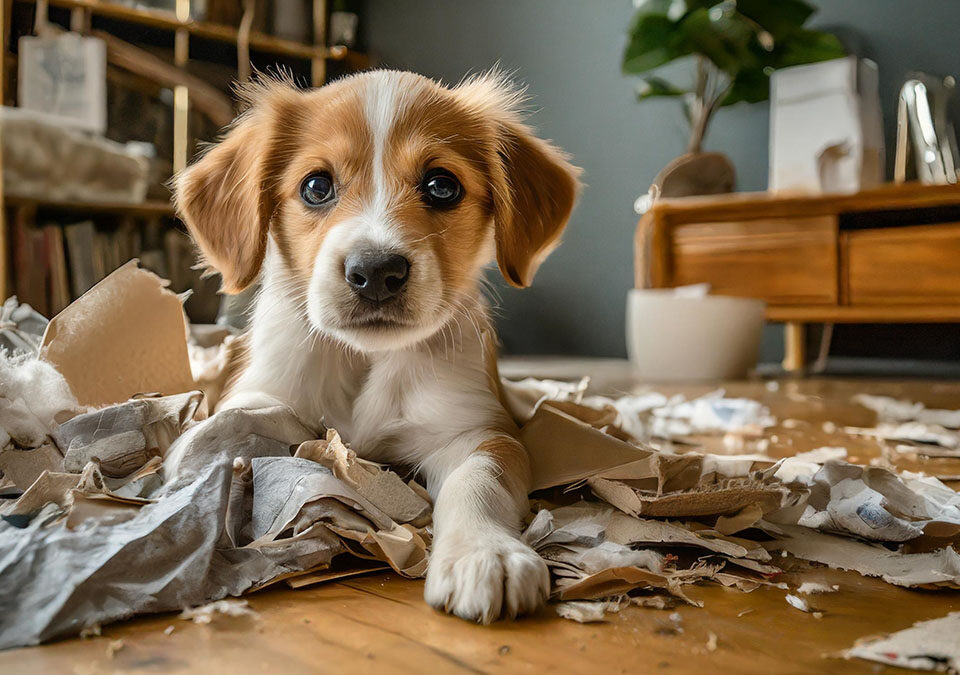
The Essential Guide to Responsible Pet Ownership: How to Be the Best Pet Parent
April 25, 2024
Understanding and Mitigating Noise Phobias in Pets: Fireworks and Storms
July 5, 2024As a responsible dog owner, you want to ensure that your furry friend is in the best possible health. While regular dental care, such as brushing their teeth, can go a long way in maintaining oral hygiene, there is an important tool that can help take it even further: dental radiographs.
These diagnostic images, commonly known as X-rays, are not just for humans. Just like us, dogs can also suffer from dental issues that aren’t easily visible to the naked eye. That’s where dental radiographs come in. They allow veterinarians to examine the internal structures of your dog’s teeth, gums, and jawbone, enabling them to catch and address problems that may otherwise go unnoticed.
Not only do dental radiographs help identify issues like tooth decay, fractures, and abscesses, but they can also help in detecting hidden problems beneath the gum line, such as impacted or retained teeth, periodontal disease, or even oral tumors. By getting regular dental radiographs for your dog, you can ensure their oral health is closely monitored and any potential problems are caught early, leading to better treatment outcomes and a happier, healthier pet.
Investing in dental radiographs for your dog’s oral health is a key step towards ensuring their overall well-being.
The Importance of Oral Health for Dogs
Just like humans, dogs can suffer from a variety of dental problems if their oral health is not properly maintained. Dental issues in dogs can cause pain, discomfort, and even lead to more serious health complications if left untreated.
Poor oral health can affect your dog’s ability to eat, leading to weight loss and malnutrition. It can also cause bad breath, which can be unpleasant for both you and your pet. Additionally, dental problems can spread infection to other parts of the body, including the heart, liver, and kidneys, potentially causing severe health issues.
Regular dental care, including brushing your dog’s teeth, providing dental chews, and scheduling professional dental cleanings, is important for maintaining their oral health. However, there are certain dental issues that may not be visible without the help of dental radiographs.
What are Dental Radiographs
Dental radiographs, also known as dental X-rays, are a valuable diagnostic tool used in veterinary dentistry. They involve taking images of your dog’s teeth and surrounding structures to get a comprehensive view of their oral health.
Unlike a physical examination, where only the external surfaces of the teeth and gums can be observed, dental radiographs allow veterinarians to see what lies beneath the surface. This includes the roots of the teeth, the supporting bone structure, and the surrounding tissues.
Dental radiographs are typically performed using a digital X-ray machine specifically designed for veterinary dentistry. The procedure is safe and painless for your dog, and it provides crucial information about their oral health that cannot be obtained through visual examination alone.
How Dental Radiographs Help in Diagnosing Dental Issues in Dogs
Dental radiographs play a crucial role in diagnosing dental problems in dogs that may otherwise go unnoticed. While external signs of dental issues, such as loose or discolored teeth, bad breath, and swollen gums, can indicate a problem, they do not provide a complete picture of the underlying issue.
With dental radiographs, veterinarians can identify a wide range of dental problems that may be affecting your dog’s oral health. These include:
1. Tooth Decay and Fractures
Tooth decay and fractures are common dental problems in dogs. However, they may not always be visible on the surface. Dental radiographs can reveal cavities or cracks in the teeth that may require treatment. Left untreated, tooth decay and fractures can lead to pain, infection, and tooth loss.
2. Abscesses and Infections
Abscesses are pockets of pus that form around the tooth root and can cause severe pain and swelling. Infections can also occur beneath the gum line without any visible signs. Dental radiographs can help identify abscesses and infections, allowing veterinarians to provide appropriate treatment to alleviate your dog’s discomfort.
3. Impacted or Retained Teeth
Sometimes, dogs may have teeth that fail to emerge from the gum line or remain in the mouth even after the baby teeth have fallen out. These are known as impacted or retained teeth and can cause problems such as crowding, misalignment, and difficulty chewing. Dental radiographs can help identify these hidden teeth and determine the best course of action.
4. Periodontal Disease
Periodontal disease is a common dental problem in dogs, characterized by inflammation and infection of the gums and supporting structures. While the early stages of periodontal disease can be detected through visual examination, dental radiographs are essential for assessing the severity of the disease. They can reveal bone loss, root damage, and other hidden signs of periodontal disease.
5. Oral Tumors
Oral tumors can be difficult to detect without the use of dental radiographs. These tumors can be benign or malignant and can affect the gums, tongue, or other oral tissues. Early detection through dental radiographs is crucial for prompt treatment and improved prognosis.
By identifying these dental issues early through dental radiographs, veterinarians can provide appropriate treatment, relieving your dog’s pain and improving their overall oral health.
The Benefits of Dental Radiographs for Dogs
Getting regular dental radiographs for your dog offers several benefits for their oral health and overall well-being.
1. Early Detection of Dental Problems
Dental radiographs allow veterinarians to catch dental issues early, before they become more severe and harder to treat. By identifying problems at an early stage, your dog can receive prompt treatment, reducing their discomfort and preventing further complications.
2. Comprehensive Evaluation of Oral Health
Dental radiographs provide a comprehensive evaluation of your dog’s oral health. They allow veterinarians to assess the condition of the teeth, roots, bones, and surrounding tissues, providing a complete picture of your dog’s oral health status. This comprehensive evaluation helps in developing an effective treatment plan tailored to your dog’s specific needs.
3. More Accurate Treatment Planning
With dental radiographs, veterinarians can accurately assess the extent of dental issues and plan appropriate treatments. This ensures that the treatment is targeted and effective, leading to better outcomes and a faster recovery for your furry friend.
4. Preventing Future Dental Problems
Regular dental radiographs can help identify potential dental issues that may not be causing any symptoms yet. By addressing these problems early, veterinarians can prevent future complications and help maintain your dog’s oral health in the long run.
5. Improved Quality of Life
By maintaining your dog’s oral health through regular dental radiographs, you are ensuring their overall well-being and quality of life. Healthy teeth and gums allow your dog to eat comfortably, enjoy their favorite activities, and live a happier, pain-free life.
When Should Dental Radiographs be Performed on Dogs
Dental radiographs should be performed on dogs as part of their routine dental care. The frequency of dental radiographs may vary depending on your dog’s age, breed, and overall oral health. However, as a general guideline, dental radiographs are typically recommended at least once a year for adult dogs. Puppies may also require dental radiographs to assess the eruption of their permanent teeth and identify any potential problems early on.
In addition to routine dental care, dental radiographs may be necessary if your dog shows signs of dental problems such as bad breath, difficulty eating, excessive drooling, or swollen gums. Your veterinarian will be able to determine the appropriate timing and frequency of dental radiographs based on your dog’s individual needs.
The Procedure of Taking Dental Radiographs for Dogs
The procedure of taking dental radiographs for dogs is safe, painless, and relatively quick. It is typically performed under general anesthesia to ensure that your dog remains still and comfortable throughout the process. Anesthesia also allows for a more thorough examination of your dog’s mouth and reduces the risk of injury.
During the procedure, your veterinarian will position a dental X-ray sensor or film inside your dog’s mouth to capture the images. Multiple images may be taken from different angles to provide a complete view of your dog’s oral structures.
Once the images are obtained, your veterinarian will analyze them to assess your dog’s dental health and identify any potential issues. They will discuss the findings with you and recommend appropriate treatment options if necessary.
How to Prepare Your Dog for Dental Radiographs
Preparing your dog for dental radiographs involves a few simple steps to ensure a smooth and successful procedure.
1. Pre-Anesthetic Examination
Before the dental radiographs, your dog will need to undergo a pre-anesthetic examination. This involves a thorough physical examination to assess your dog’s overall health and determine if they are fit for anesthesia. Blood tests may also be recommended to check for any underlying health conditions that could affect the procedure.
2. Fasting
Your veterinarian will provide specific instructions regarding fasting before the dental radiographs. In general, dogs are required to fast for a certain period of time prior to the procedure to prevent any complications related to anesthesia. This typically means withholding food for at least 8 to 12 hours before the scheduled appointment.
3. Anesthesia and Monitoring
On the day of the procedure, your dog will be administered anesthesia to ensure their comfort and safety. Throughout the dental radiographs, your dog’s vital signs, such as heart rate, blood pressure, and oxygen levels, will be closely monitored by trained veterinary staff.
4. Post-Procedure Care
After the dental radiographs, your dog will need some time to recover from the anesthesia. Your veterinarian will provide post-procedure care instructions, which may include pain medication, antibiotics, and soft food for a few days. It’s important to follow these instructions carefully to ensure a smooth recovery for your dog.
Finding a Veterinary Clinic that Offers Dental Radiography Services
When it comes to dental radiography for your dog, it’s important to find a veterinary clinic that offers this service. Not all clinics have the necessary equipment or expertise to perform dental radiographs. Here are a few tips to help you find a veterinary clinic that provides dental radiography services:
1. Ask for Recommendations
Start by asking your veterinarian for recommendations. They may be able to refer you to a trusted clinic that specializes in dental care for pets. You can also ask fellow dog owners for recommendations or check online forums and communities for reviews and feedback.
2. Research the Clinic’s Credentials
Before choosing a clinic, research their credentials and reputation. Look for clinics that have veterinarians who specialize in dentistry or have undergone additional training in dental radiography. Check if the clinic is accredited and if their staff is experienced in handling dental radiographs for dogs.
3. Visit the Clinic
If possible, visit the clinic before scheduling an appointment. This will give you an opportunity to see the facilities, meet the staff, and ask any questions you may have. A clean and well-equipped clinic with a friendly and knowledgeable staff is a good indication of quality care.
4. Consider Cost and Location
While quality of care should be your top priority, it’s also important to consider the cost and location of the clinic. Dental radiographs can be an investment, so it’s worth comparing prices and ensuring that the clinic’s services fit within your budget. Additionally, choose a clinic that is conveniently located for easy access when needed.
By finding a reputable veterinary clinic that offers dental radiography services, you can ensure that your dog receives the best possible care for their oral health.
Conclusion: The Role of Dental Radiographs in Maintaining Your Dog’s Oral Health
Dental radiographs are a vital tool in maintaining your dog’s oral health. They allow veterinarians to detect dental issues that may not be visible to the naked eye, ensuring early intervention and appropriate treatment. By investing in regular dental radiographs for your dog, you are taking an important step towards ensuring their overall well-being and happiness.
Remember, dental radiographs are just one part of a comprehensive dental care routine for your dog. Regular brushing, dental chews, and professional cleanings are also important for maintaining their oral health.
As a responsible dog owner, prioritize your dog’s oral health by working closely with your veterinarian and scheduling regular dental check-ups that include dental radiographs. By doing so, you are giving your furry friend the best chance at a healthy, pain-free, and happy life.




